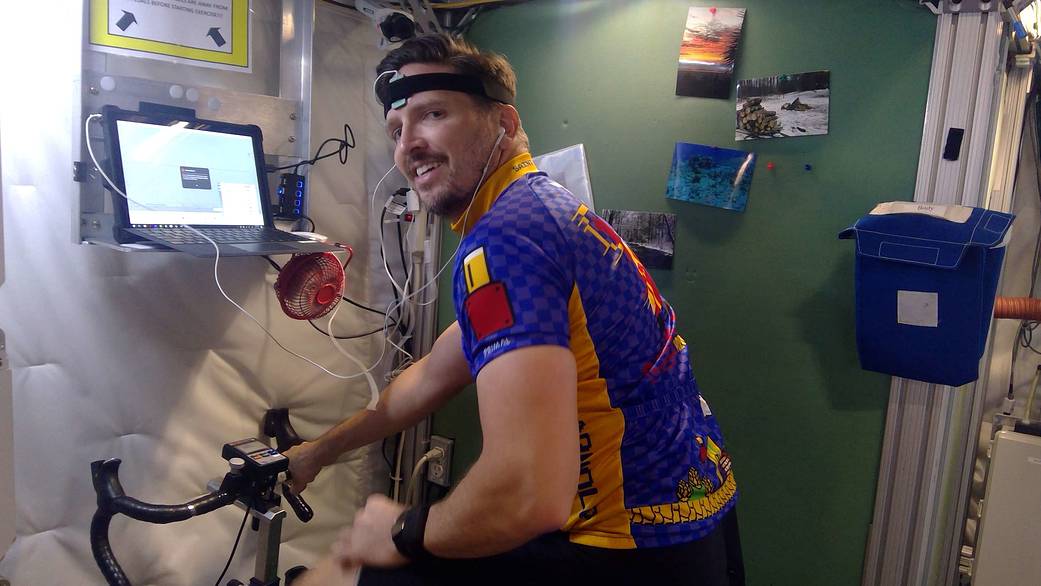During Campaign 6, Mission 1, crew member Christopher Roberts takes a spin on a stationary bicycle inside the exercise area of the Human Exploration Research Analog, or HERA.
HERA is a habitat at NASA’s Johnson Space Center in Houston that houses four participants at a time. Roberts and his crewmates were one of several groups who lived and worked inside HERA on a 45-day simulated mission to the Martian moon Phobos. While the crew is inside, researchers outside HERA study how isolation, confinement, and remote conditions affect crew health and performance.
HERA crew members follow regularly scheduled exercise routines similar to those of astronauts aboard the International Space Station. Routine exercise is essential for maintaining the physical and mental health of crew members while living in any habitat with limited contact, space, and resources.
For this campaign, each crew member averages about 30 minutes of exercise per day, six days a week. On the habitat’s second floor, they can perform a mix of cardio and resistive exercises using the bicycle and free weights. Smart watches, like the one Roberts is wearing, monitor heart rate, blood oxygen, activity, and sleep. The sensor on his head measures blood flow.
With this data, NASA’s Human Research Program can better design routines and schedules that support the physical and mental health of astronauts on future long-term missions.
Got a question for future HERA crew members? Ask them through our new Groundlinks program!
Image Credit: NASA
____
NASA’s Human Research Program, or HRP, pursues the best methods and technologies to support safe, productive human space travel. Through science conducted in laboratories, ground-based analogs, and the International Space Station, HRP scrutinizes how spaceflight affects human bodies and behaviors. Such research drives HRP’s quest to innovate ways that keep astronauts healthy and mission-ready as space travel expands to the Moon, Mars, and beyond.
Lauren A. Schrader, Nathan Cranford
Jennifer TurnerNASA Human Research Program Strategic Communications



























